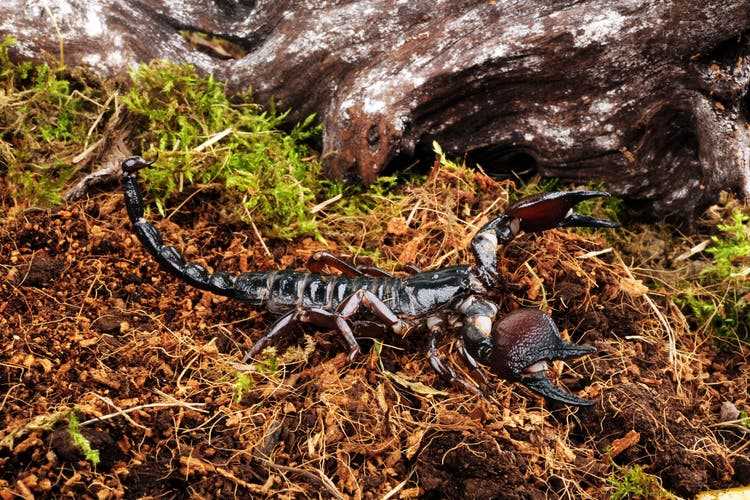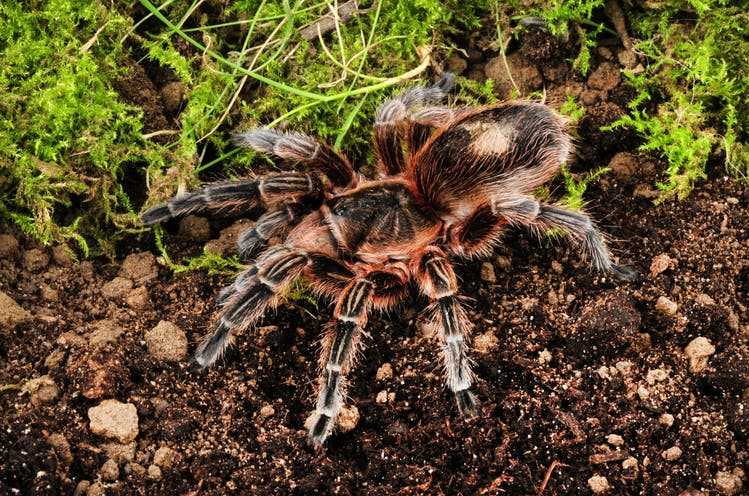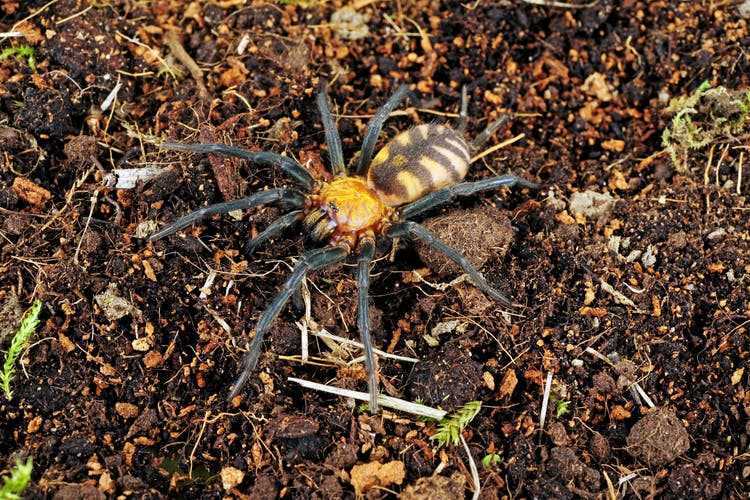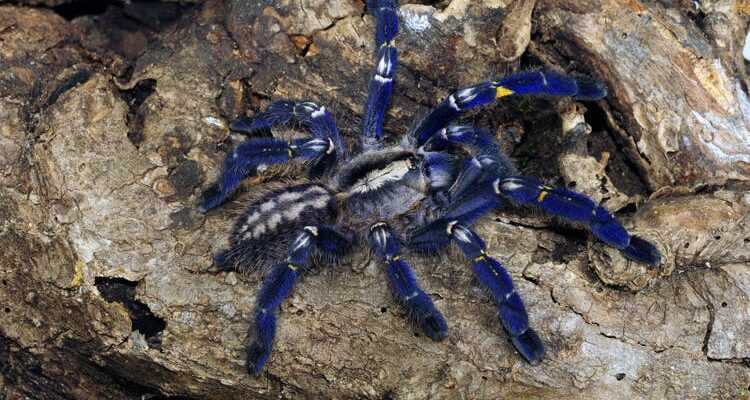Spinning as a hobby? That sounds eerily beautiful and is becoming more and more popular. However, the business has some downsides. Researchers are now shedding light on a booming industry.
A blue ornamental tarantula (Poecilotheria metallica) on a branch.
A watchful dog, a cuddly cat or would you prefer turtles in the terrarium? How boring, some animal lovers would say. As best friends, one increasingly encounters species that might make us cringe in the wild. Spiders for example.
No wonder, especially exotic specimens look excitingly unconventional, their care is usually very simple and space-saving. This already applies to the purchase: Spiders can be ordered online with just a few clicks and delivered a short time later by parcel or even by envelope.
An international group of experts has now investigated exactly this in a study recently published in the journal “Communications Biology”. has been published: It is dedicated specifically to the online trade in spiders and related animals. The topic may seem unusual for a scientific work. But the need was all the more urgent, because the arachnid trade is largely unregulated, and many of its players like to evade public light as much as spiders do.
1248 species of arachnids were available online
In order to find out more about the extent of this globally booming industry, the scientists around the biologist Benjamin M. Marshall first used search terms that would also be used by prospective buyers to browse the web, such as “spider”, “arachnid” or “scorpion”; this in nine languages. The authors of the study were able to identify numerous websites on which the animals are sold.
The data from the online shops was then evaluated and combined with historical sales lists going back to 2002. The result is a comprehensive list: a total of 1248 species of spiders, scorpions and their relatives are currently available online or have been for sale in the past few years. These include some spectacular specimens such as the Asian forest scorpion or the striped zebra tarantula from Costa Rica.

A red scissor scorpion (Pandinus cavimanus) in defensive posture.
Through further investigation, the researchers found that the traders and their backers had captured about two-thirds of the arachnids in the wild. Many specimens have been shipped from countries where they are not native: an indication that they are being smuggled across borders using illegal smuggling networks.
The perpetrators have an easy game. Because while the wildlife trade poses a major threat to our planet’s ecosystem, regulations and public attention are primarily focused on well-known and beloved animals such as elephants, parrots and turtles. As a result, only 2 percent of the arachnids listed are subject to international trade regulations, the researchers report.
Only a fraction of arachnids are mentioned in trade regulations
For example, the Convention on International Trade in Endangered Species of Wild Fauna and Flora (Cites), which regulates international trade in a wide range of plant and animal species, contains just 30 species in its trade database. Individual countries have their own regulations, and customs officials frequently intercept arachnids that arrive without the required papers. But overall, this rarely happens.

A tarantula (Euathlus vulpinus) in the terrarium.
In addition, it would take expert knowledge to survey the ever-growing biodiversity and identify illegal shipments. As in other sectors, retailers are constantly on the lookout for the latest trends: newly discovered arachnid species are often offered in the shops shortly after their first description by scientists. Nearly 200 of the species discovered since 2000 are now traded, and dozens have become available within a year or two of their first description, Marshall and his team report.
Some species can be bought before science even knows them
Collectors may even buy species that are not yet known to science. Researchers have identified about 100 commercially available species that have been described as variants of known species. The “Vietnamese blue tarantula”, for example, could actually be a new species in its own right. “Not for beginners,” points out a provider in the United States at least a warning: the animals are “very defensive”.
It can be assumed that the dealers do not always have a complete overview of what is crawling around in their terrariums. And of course it also applies to the arachnid trade that not all descriptions correspond to the goods actually shipped. The list of scientists working with Marshall can therefore not be regarded as a complete inventory of all arachnid species offered for sale.
But the problems posed by this clandestine network of spider traders are likely to be even greater given the actual scale of their activities. The ecological impact of the spider trade is difficult to determine, not least because so little is still known about arachnids.

A tiger spider (Linothele fallax), also known as a double-tailed spider, in the terrarium.
What is certain, however, is that endangered species such as tarantulas are also sold online. This is all the more worrying as they often only occur in a few small regions in nature and grow slowly there. Its imposing appearance and comparatively long life expectancy make it a popular species for spider lovers. But the consequences for the existence of a species and the entire ecosystem can be all the greater if they are removed from it.
In principle, however, nothing speaks against spiders as pets. In fact, with their dedication, spider friends can help save some species that would have been extinct in the wild by now. So if you’re thinking of getting a spider and keeping it in your own home, just make sure you know where it came from. It should also come from a breeding farm and not have been taken from the wild.
